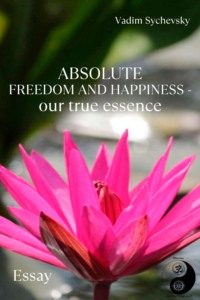
Absolute freedom and happiness – our true essence
An important question may arise here. How can one get rid of intrusive or painful images of the past that surface in the mind and make one suffer? The only way is to return the consciousness to the original state of calm, in which any information is stopped and has no influence. This, in fact, is the subject of the book «Dharma – The Way Things Are. The Real Experiences and Realizations of a Spiritual Practitioner», and this short essay is also about it.
Secondly, images have been acquired and accumulated by us. For example, I visited Sri Lanka for the first time in 2004. Before that, I did not know much about this country. Consequently, I did not have images of Sri Lanka either. However, having visited the island many times, I have gained extensive experience and knowledge about Sri Lanka. Therefore, I can now visualize, for example, the first capital of the ancient Sinhalese state, Anuradhapura, and many other places on the island.
As we can see from this example, images are not something inherent to us from the beginning, they are just data received by us, which are not our essence.
4. Formed experience
The fourth component of the false «self» is the Formed Experience. In our lives, we acquire various experiences through actions with our bodies, speech, and thoughts. These experiences are stored as information and become the reason for acquiring new experiences. In other words, we perform actions, experience, and accumulate experiences, further it is these experiences form our likes and dislikes that cause us to act again.
Thus, the fourth Aggregate itself is the Formed Experience, and its function is to want or not to want, in other words, will, or intention. For example, if you have tasted a certain food, you liked it very much, and then you will want this food again. If after eating this food you had an upset stomach, then it is unlikely that you will want to eat it again. This is how the Formed Experience accumulates and then works, predetermining our subsequent actions.
Just like Perceptions, Formed Experience is not something that is inherent in us from the beginning, it is just data that we accumulate as a result of our actions. The problem is that we identify ourselves with our past experiences. As a consequence, experience becomes the driving force that completely controls us. In other words, the Formed Experience becomes the desires and aversions that drive us.
Of course, we can derive pleasure from the fulfilment of our desires, which are a manifestation, or function, of our fourth Aggregate. However, any objects of our desires are illusions: they either change and eventually disappear or simply bore us, because our consciousness, which creates all illusions of joy or suffering, is constantly changing, as a result of which satiety is bound to occur and the object ceases to satisfy us. If we are unable to satisfy our desires, to get what we want, the suffering of dissatisfaction arises. In this case, we begin to hate everything around us. Hatred and, consequently, pain also arise when we have experiences that are the opposite of our desires, that is, when we experience what we do not want to experience. I will talk more about the process of perception and discernment that forms all our suffering in the next chapter.
Конец ознакомительного фрагмента.
Текст предоставлен ООО «Литрес».
Прочитайте эту книгу целиком, купив полную легальную версию на Литрес.
Безопасно оплатить книгу можно банковской картой Visa, MasterCard, Maestro, со счета мобильного телефона, с платежного терминала, в салоне МТС или Связной, через PayPal, WebMoney, Яндекс.Деньги, QIWI Кошелек, бонусными картами или другим удобным Вам способом.
Примечания
1
Master Hakuin Ekaku (1686–1768) was the greatest Zen Master and one of the most notable figures of Japanese Zen Buddhism.
2
For the difference between Enlightenment and Emancipation and the spiritual levels, see Chapters 3 and 4.
3
Daisetsu Teitaro Suzuki (1870–1966) was a Japanese Buddhist scholar, professor of philosophy. In my, perhaps subjective, opinion, D.T. Suzuki experienced one or more Enlightenments, which is clear from his texts.
4
An ancient Sanskrit text explaining the Teachings of Yoga. Written by an unknown author on behalf of God Shiva. It is generally believed that God Shiva passed on all the teachings and ways of practicing yoga to his wife Goddess Parvati, and she in turn passed on the knowledge to God Ganesha. Therefore, it is believed that the text of «Shiva Samhita» was written down by a yogi from the words of God Ganesha.
5
For the three worlds of the Universe, see later in this chapter. For a detailed description, see «Dharma – The Way Things Are. Real Experience and Realizations of a Spiritual Practitioner», Volume I.
Вы ознакомились с фрагментом книги.
Для бесплатного чтения открыта только часть текста.
Приобретайте полный текст книги у нашего партнера:
Всего 10 форматов